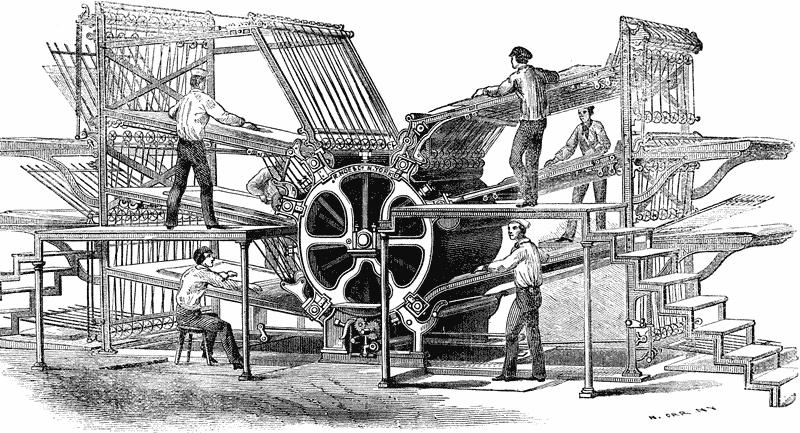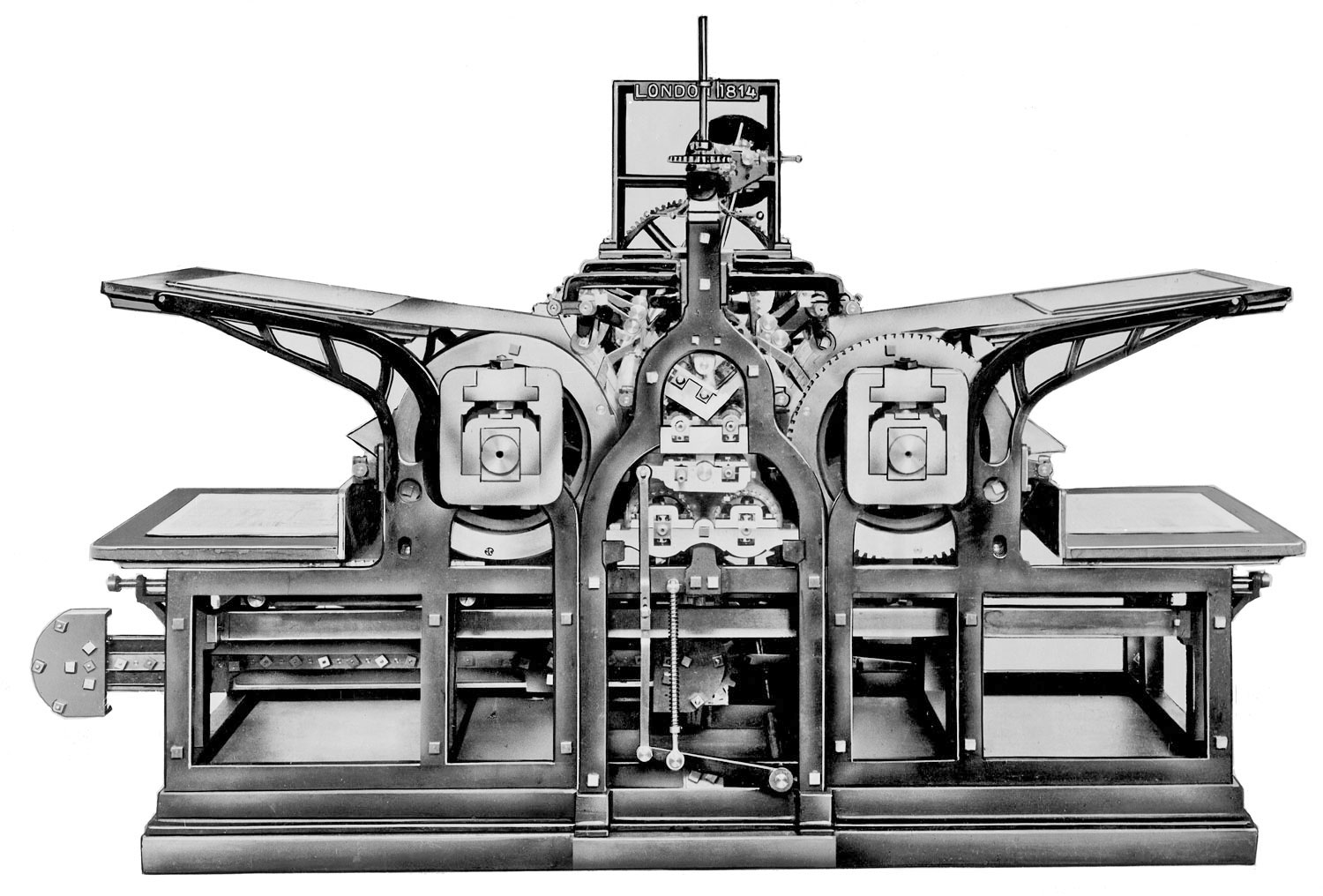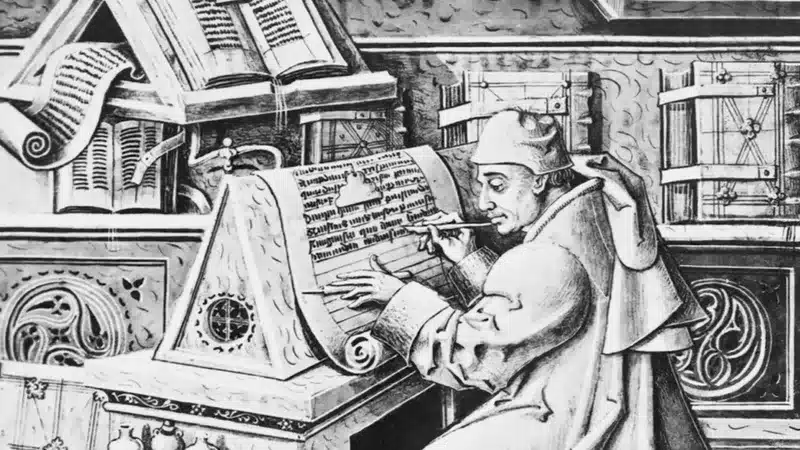Anúncios
Embark on a fascinating journey through time as we explore the profound transformation of printing technology – “From Gutenberg to Digital”. This in-depth narrative will delve into the intricacies of how this fundamental aspect of human communication evolved, shaping societies and cultures along the way.
The tale begins with the revolutionary invention of the Gutenberg press, a machine that heralded the dawn of a new age in the dissemination of knowledge. We will investigate its profound impact on the world, changing the way people accessed and consumed information. A truly game-changing innovation, the Gutenberg press set in motion a domino effect that continues to influence modern printing technology.
Anúncios
Next, we journey through the significant developments that occurred over the centuries. From manual to mechanical, and eventually electronic, the printing process has undergone a myriad of changes, each contributing to increased speed, efficiency, and quality. We will delve into these intricate transitions, providing a comprehensive view of the progression.
Fast forward to the current digital era, where technology has brought about a seismic shift in printing methods. The advent of digital printing has not only drastically improved the speed and quality of printed material but also enabled customization at an unprecedented scale. We will examine these advancements, offering insights into their implications for the future.
Anúncios
In this journey, we will not only explore the technical aspects but also the societal impacts of these transformations. How has the evolution of printing technology influenced the spread of information, education, and culture? How has it shaped and been shaped by societal needs and technological advancements? By the end of this journey, you will have a profound understanding of the rich tapestry of history and innovation that makes up the evolution of printing technology.

The Mechanized Printing: The Gutenberg Era

The history of printing technology finds one of its most transformative milestones in the 15th century with the invention of the Gutenberg printing press. Developed by Johannes Gutenberg around 1440 in Mainz, Germany, this revolutionary device redefined the process of information dissemination, laying the foundation for the modern era of mass communication. Prior to Gutenberg’s breakthrough, books were considered precious commodities, often reserved for the wealthy elite and religious institutions. The process of creating a single manuscript involved meticulous manual copying by scribes—a slow, expensive, and error-prone endeavor that limited the spread of knowledge to a privileged few.
Gutenberg’s movable type printing press changed everything. It introduced a system in which individual, reusable metal type pieces could be arranged and rearranged to form entire texts. Each character was cast from a mold and standardized in size and spacing, allowing for consistent alignment and uniform appearance on the printed page. Once a page layout was set, ink was applied and the press was used to transfer the content onto paper, parchment, or vellum. This method allowed multiple copies of the same text to be produced quickly and accurately—something that had never been possible before on such a scale.
This monumental leap in efficiency and affordability drastically reduced the time and cost associated with book production. What once took months or even years to replicate could now be completed in a matter of days. As a result, the accessibility of written material expanded rapidly, leading to increased literacy rates and a broader public engagement with knowledge. No longer confined to monasteries or royal courts, books began to circulate among merchants, students, and the growing middle class, fostering the rise of humanism and the Renaissance spirit across Europe.
It is worth noting that Gutenberg’s press was not entirely without precedent. Earlier civilizations had explored printing techniques, including the Chinese, who developed woodblock printing as early as the 9th century and movable clay type in the 11th century. Additionally, the concept of the screw press—used in winemaking and olive oil extraction—was borrowed from ancient Roman technology. However, what makes Gutenberg’s contribution truly groundbreaking was his synthesis of these disparate ideas into a cohesive and efficient mechanical system tailored specifically for mass text reproduction.
Furthermore, Gutenberg’s development of an oil-based ink, which adhered better to metal type than the water-based inks used previously, was another critical innovation. This allowed for sharper, more durable prints and contributed to the overall success and longevity of the printed material.
The Gutenberg press not only sparked a technological revolution but also a cultural one. It democratized access to knowledge, accelerated the spread of ideas, and played a pivotal role in the Protestant Reformation, the Scientific Revolution, and the Age of Enlightenment. In many ways, it marked the true beginning of the Information Age. As we reflect on the evolution of printing, it is clear that Gutenberg’s invention was far more than a technical marvel—it was a catalyst for intellectual and societal transformation on a global scale.
The Industrial Age: Steam Powered Printing

Fast forward to the 19th century, and the world witnessed another monumental leap in printing technology during the transformative period of the Industrial Revolution. This era, characterized by rapid technological advancement and mechanization, ushered in steam-powered printing presses that elevated the art and science of printing to an unprecedented industrial scale. No longer confined to manual labor and small-scale production, printing became a key player in the burgeoning world of mass communication.
A pivotal innovation of this period was the invention of the rotary printing press by American inventor Richard March Hoe in 1843. Unlike Gutenberg’s flatbed press, which printed one page at a time using a back-and-forth motion, Hoe’s rotary press employed rotating cylinders. This allowed for continuous, high-speed printing on long rolls of paper, significantly boosting productivity. Newspapers, pamphlets, and books could now be produced in massive quantities and at a much faster pace. The rotary press laid the foundation for modern newspaper printing and became instrumental in the expansion of journalism and public information access throughout the 19th century.
The increase in printing speed and efficiency directly supported the growing demand for timely news and affordable literature in an increasingly literate and urbanized society. Print media flourished as never before, with daily newspapers becoming widely available in major cities across Europe and America. The printing industry began to move beyond its artisanal roots, becoming a central component of modern industrial economies.
Another groundbreaking invention during this time was the Linotype machine, patented by Ottmar Mergenthaler in 1884. This revolutionary device mechanized the labor-intensive process of typesetting, which had remained relatively unchanged since Gutenberg’s time. Instead of manually placing individual letters into a composing stick, Linotype operators typed on a keyboard. The machine would then assemble matrices and cast entire lines of type in molten metal—hence the name “line-o’-type.”
The Linotype machine dramatically accelerated the typesetting process and reduced the manpower needed for large-scale publication. It also improved accuracy and consistency, crucial for newspapers and publishing houses that handled high volumes of content on a daily basis. The impact of the Linotype was so profound that it remained a standard in the newspaper and book printing industries for nearly a century.
Together, the steam-powered rotary press and the Linotype machine represent the heart of the Industrial Age of printing—a time when innovation, efficiency, and accessibility converged. These advances not only transformed the technical aspects of printing but also empowered a broader, more informed public. As literacy spread and reading material became more affordable, ideas flowed more freely than ever before, further fueling the social, political, and scientific revolutions of the modern age.
The Age of Phototypesetting
In the mid-20th century, printing technology took another leap forward with the advent of phototypesetting. This technology replaced metal type with photographic images. Text was input into a machine, which then used a light source to project the characters onto photographic paper or film.
This process produced high-quality print and allowed for greater flexibility in layout and design. It also paved the way for digital typesetting. However, phototypesetting was a transitional technology; it was quickly supplanted by the rise of digital typesetting in the late 20th century.
The Digital Age: From Bits to Print
The digital revolution in the late 20th century brought about a seismic shift in printing technology. The advent of desktop publishing and the development of digital printing technology enabled virtually anyone with a computer to become a publisher.
Early digital printing technology utilized laser or inkjet printers to transfer digital images onto paper. These printers were capable of producing high-quality color prints in small quantities, providing an affordable solution for small-scale printing needs.
Later developments in digital printing technology led to the introduction of high-speed, high-volume digital presses. These presses, which use either inkjet or electrophotographic technology, can print a wide range of substrates, from paper and plastic to fabric and metal.
The Future of Printing Technology
Today, the printing industry continues to evolve rapidly, embracing cutting-edge innovations that are pushing the boundaries of what was once thought possible. Among the most groundbreaking developments is 3D printing technology, also known as additive manufacturing. Unlike traditional printing, which involves transferring ink onto a flat surface, 3D printing uses digital models to create tangible, three-dimensional objects, building them layer by layer from materials such as plastic, resin, metal, or even organic compounds.
Although still in its relatively early stages compared to traditional methods, 3D printing is already beginning to revolutionize multiple sectors. In manufacturing, it enables the rapid prototyping of complex parts, reducing both time and costs. In healthcare, custom prosthetics, dental implants, and even biocompatible tissues are being printed with unprecedented precision. The construction industry is experimenting with large-scale printers that can fabricate entire houses or building components, while fashion designers are exploring wearable art made through intricate, customizable 3D prints.
Looking to the horizon, the potential of printing technology continues to expand. Emerging innovations such as conductive inks could pave the way for flexible, printed electronics, allowing for the integration of sensors and circuits directly onto everyday surfaces. Imagine clothing embedded with responsive technology or packaging that communicates with your devices.
Another promising frontier is bioprinting—a technique that uses living cells as the “ink” to fabricate tissues and potentially even entire organs. This technology holds immense promise for the field of regenerative medicine, with the long-term goal of alleviating the shortage of donor organs and transforming how we treat diseases and injuries.
In essence, the future of printing is not just about ink on paper—it’s about redefining creation itself, unlocking possibilities that blend the digital and physical worlds in ways we are only beginning to understand.
In Conclusion
From Gutenberg’s movable type to today’s 3D printers, the journey of printing technology has been marked by continuous innovation. Each new development has broadened the possibilities of what can be printed and who can print it, democratizing the access to information and fostering creativity and innovation. As we look to the future, it is exciting to contemplate what the next chapter in the evolution of printing technology will bring.
In conclusion, the journey from Gutenberg to the digital era underscores the dynamic and transformative nature of printing technology. The Gutenberg press heralded the democratization of knowledge, enabling wider access to information and catalyzing intellectual and societal progress. Yet, it was just the beginning. The evolution of printing technology continued, embracing innovation and technological advancement. The onset of digital technology revolutionized the printing industry, providing unprecedented convenience, speed, and efficiency. The transformation not only streamlined processes but also opened new avenues for creativity and personalization. However, the journey does not end here. With the advent of technologies like 3D printing, the future of printing is set to redefine boundaries, proving that the possibilities are endless. The evolution of printing technology from Gutenberg to digital symbolizes human ingenuity and the relentless pursuit of progress. It serves as a testament to our ability to push the boundaries of what is possible, always striving for improvement and efficiency. Thus, the narrative of printing technology is not just about machinery and techniques; it is about the indomitable human spirit, innovation, and the quest for knowledge. As we move forward, we can only anticipate what marvels the future of printing technology holds.

